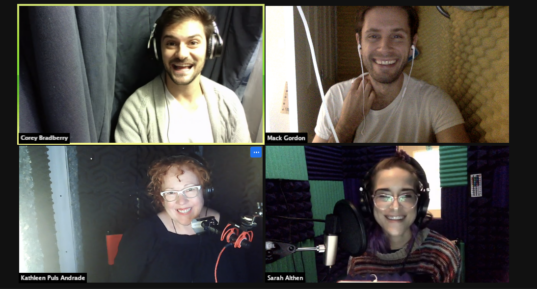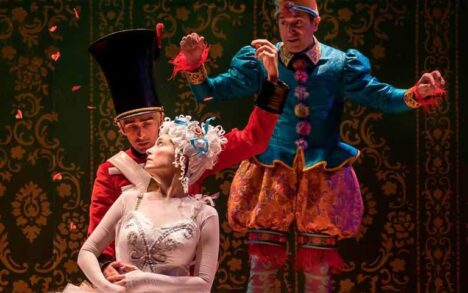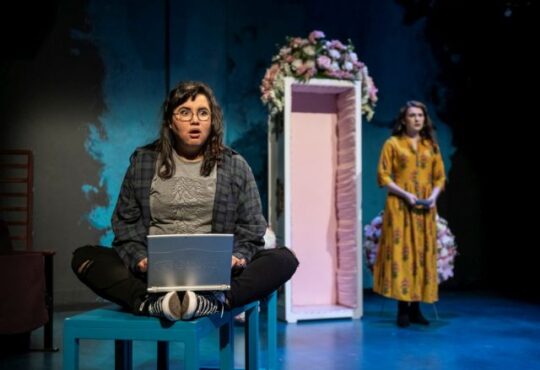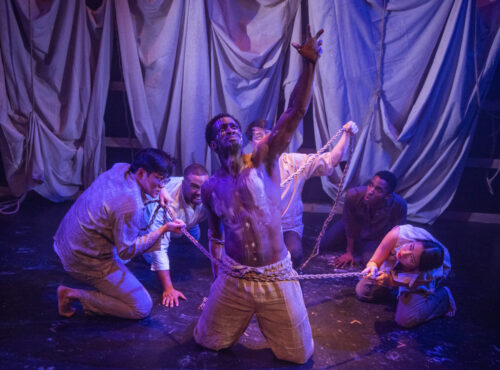
4 Stars
If you’re new to the city or younger than 60 you might not know that on the corner of Rush and Bellevue where Gibson’s Steakhouse now stands was one of the premiere entertainment venues in the country, a nightclub called Mr. Kelly’s that was the center of the city’s midcentury bohemian nightlife.
Kelly’s was ground zero for the local jet set, Michigan Avenue “Mad Men” and visiting businessmen from around the country who came to the Windy City to cut monumental deals.
It was virtually guaranteed that executives visiting between 1955 and 1975 would be treated to a night at Kelly’s that included a great steak and world class entertainment.
The venue was the brainchild of brothers Oscar and George Marienthal. This documentary film “Live at Mr. Kelly’s” is a love letter from George’s son, Executive Producer David Marienthal.
About 90 minutes long, “Live at Mr. Kelly’s” is jam packed with testimonials and stories from many entertainers including Barbra Streisand, Lily Tomlin, Bob Newhart, Herbie Hancock, Shecky Green, Ramsey Lewis, Bette Midler, The Smothers Brothers, Lainie Kazan, Tom Dreesen, Tim Reed, Mort Sahl and others who, while in Chicago, called Mr. Kelly’s home or who attribute their appearance at the local club as a significant contribution to their success.
Many of the comedians credit Mr. Kelly’s with helping to fashion the unique American art form of standup comedy. Certainly the club championed the best of the best with early appearances by the likes of Lenny Bruce and Peoria native Richard Pryor.
Barbra Streisand opens the film with a story about shooting publicity photos on Oak Street Beach, one of which went on to win a Grammy for best album cover.
Did you know that the famed poet, Maya Angelou, was once a calypso singer who played congas? It’s true and she performed at Mr. Kelly’s.
The title of this film is something of a misnomer since it gives nearly equal time to the history of the London House, which by the way, also featured great steaks, peerless piano players and top executives, and mentions the popular Happy Medium. Those venues were also owned and operated by the Marienthal brothers.
I learned from this film that one thing I have in common with Herbie Hancock is we both took prom dates to the London House. I don’t know about Herbie but I married my date
It was actually my now wife’s prom. She was graduating from Senn High School on the northside and going on to study piano at Millikin University in Decatur so of course she wanted a dinner venue with piano music. What could be better than Ramsey Lewis at the London House on Michigan Avenue and Wacker with a romantic late night boat ride afterwards.
The London House was the cool jazz version of Kelly’s, concentrating nearly exclusively on the hippest of the hip including greats like Duke Ellington, Ella Fitzgerald, Andre Previn and Oscar Peterson.
Both Mr. Kelly’s and London House made live recordings that added to their fame. Luckily for us they’re available to listen to and get a sense of the ambiance of each of the intimate spaces.
This is a bit of Chicago history that with each passing day fades further into obscurity. Thankfully this film has made an effort to stop the clock and capture a snapshot of the past from a few of those who were there to witness it in its heyday.
Directed by Ted Bogosian “Live at Mr. Kelly’s” had a premiere showing at the Siskel Center September 17-19, 2021. It will be released as a video on demand (VOD) in 2021 on Oct. 12 and on DVD Oct. 19. For information visit www.misterkellyschicago.
Reno Lovison









